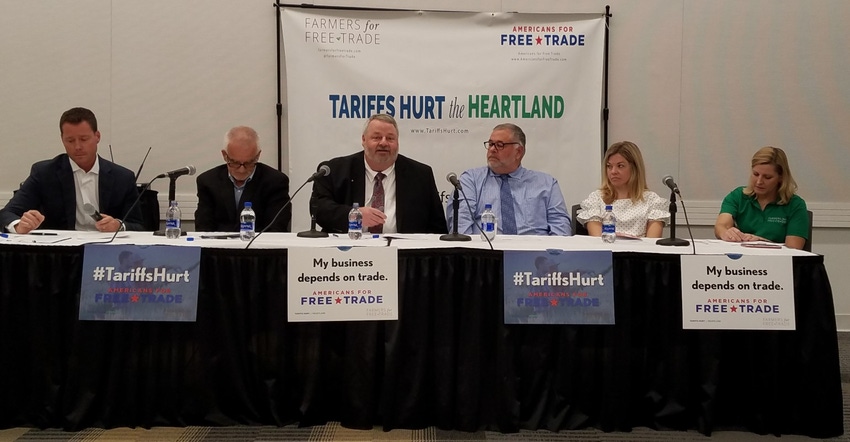Farmers continue to feel hit from trade tariffs
Relief could come after midterms if President begins to realize impact tariffs have had on industries he champions.

Bret Davis, a soybean farmer from Delaware, Ohio typically markets his crops three years out. When looking at the projected income for the next two to three years, he’s unable to determine how he will stay in the black to pay his creditors, families who work for him and continue to support his local community.
“I cannot pay my bills with the price we’re offered today on the world market,” Davis said at a Sept. 27 roundtable event in Columbus, Ohio, hosted by Farmers for Free Trade. Davis said in the last four months, his medium-sized farm has lost $400,000.
Davis said he’s supportive of President Donald Trump’s attempt to bring China in line and the need for a level playing field, but tariffs are not the way to do it. “I as a farmer, am proud of what I raise. The only thing I can do is sell that to the rest of the world. I need a level playing field,” he said.
Davis has been to 40 countries and talked to buyers who like U.S. product and understand that it is raised sustainably and offers a better value than some other products around the world.
Ian Sheldon, agricultural economist at Ohio State University, said he has seen evidence that China’s internal prices of soybeans have gone up. Meanwhile, the U.S. is facing prices for beans shipped out of the Gulf of Mexico, including transport, at $8.50/bu. The price out of a port in Brazil, which typically offers lower transportation costs to the Pacific, is $10.19. The tariffs imposed by China on U.S. soybeans is encouraging Brazilian producers while disincentivizing U.S. production.
Sheldon estimates that if tariffs remain in place until 2024, farmers will suffer, on average, a 59% decline in net income. Although 2018 will see some relief from the Trump Administration’s trade mitigation package, it is only a “band-aid” and only for one year.
He added that China has begun talk about reducing soy protein use in animal feed rations as another mechanism to deal with the tariff impact.
Davis said U.S. producers have spent 35 years building the Chinese market. “They were exporters of soybeans not too long ago. We built that market up and built those friendships, and then you pull that rug out under us,” he said.
Davis thanked the President for the trade assistance but also called it a short-term approach. “We need a long-term approach that is a fair agreement,” he said.
Maggie Sheely, manager of congressional and public affairs for the U.S. Chamber's Great Lakes region, said there is hope that Trump will take a more reasoned approach following the midterm elections.
She explained that, right now, the President is campaigning for members of Congress who are up for re-election, but after the midterms, the focus will turn to his own re-election campaign. The stories that are continuing to be told about the damaging impact on the industries he champions as his biggest fans will reveal the layoffs and profit losses and overall negative impact created by the tariffs.
Sheely expects more of a shift in Trump's thinking, saying, “I’m not sure if he calls off the tariffs, but it should be a shift less about Congress and more about the presidential race.”
About the Author(s)
You May Also Like





